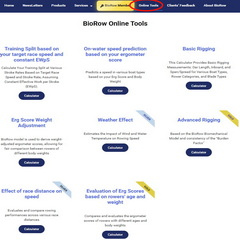The first BioRow Rowing Speed and Rigging Chart was created in 2009 (RBN 2010/01) and quickly gained popularity among rowers ...
Did you know that oar pitch generally increases from the blade tip toward the shaft? For reliable results, always measure ...
It is well known that rowers and coaches often prefer to measure pitch directly on the blade. To do this, ...
Did you know these five key principles of effective rowing technique? During recovery, the trunk angle should be constant after ...
Did you that rowing power increases during youth, peaks around age 30, and then declines with age? Carlo Zezza, a ...
Did you know how much faster will a 25% shorter race be compared to the standard 2000m distance? “Gold target ...
Here is our yearly brief overview of articles published in rowing biomechanics during the last 2024 year. Baumann and Schmid ...
